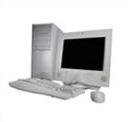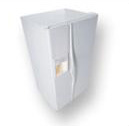Energy Efficient Upgrades : Office Equipment and Appliances

When facility operators think of energy consumption, they naturally focus on building operations (such as lighting and air-conditioning) and its shell components, but not necessarily on the energy consuming office equipment and appliances contained within.
Office Equipment

As the nation transitions to a more service focused economy, a large portion of which are small businesses, the amount of energy consuming office equipment will also increase. Inefficient office equipment not only draws power, but also emits heat that can contribute to higher cooling bills. Fortunately, to address this issue there are a variety of ENERGY STAR qualified products that can help you save money and energy. If you are replacing or purchasing equipment such as computers, monitors, and copiers always consider ENERGY STAR qualified products.
Other office equipment savings opportunities include:
Did You Know?
Liquid Crystal Display (LCD) monitors use less than 1/3 of the energy of conventional Cathode Ray Tube (CRT) monitors.
- Turn office equipment off at night.
- Check to see if your computer already has power management software installed. If so, activate it.
- Print double sided per page; much more energy is used in the manufacturing and distributing of paper than the actual printing at your office.
Find out more information about ENERGY STAR qualified office equipments.
To download FREE Power Management Software for your non-ENERGY STAR qualified computer visit ENERGY STAR's Power Management Software.
To learn more about office equipment energy efficiency visit:
Appliances

Many small businesses, for example offices, have a variety of appliances such as refrigerators and dishwashers. These appliances, just like the ones in your home, can be purchased in models that are more energy efficient. ENERGY STAR qualified appliances incorporate advanced technologies that use 10% to 50% less energy and water than standard models.
In addition, there are many energy-efficiency opportunities to help you reduce the energy consumption of these appliances.
- For refrigerators, water coolers, and freezers maintain an air-gap of at least 3 inches between the back of the appliance and the wall. Also, try cleaning condenser coils (or the back of the appliance) regularly.
- Check door seals for signs of cracking or hardening, if you can easily pull a dollar bill out from between the seal and frame on a closed door replace the seal.
- Use dishwashers only when full to conserve energy, water, and detergent.
- Use timers to ensure that coffee maker heating elements are not operating in off hours.
To learn more about appliance energy-efficiency visit:
- ENERGY STAR Qualified Appliances
- Consortium for Energy Efficiency
- Federal Trade Commission's How to Buy an Energy-Efficient Home Appliance Fact Sheet
- California Energy Commission's Database of Energy Efficient Appliances

